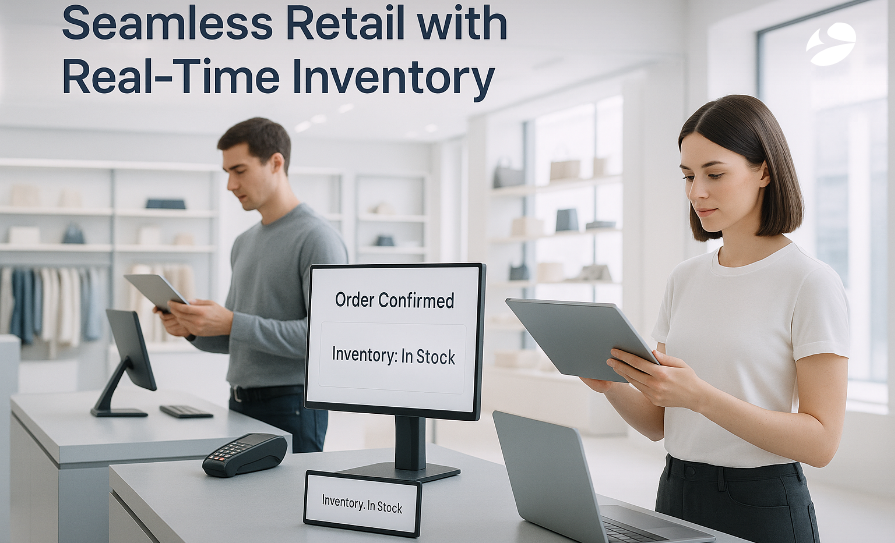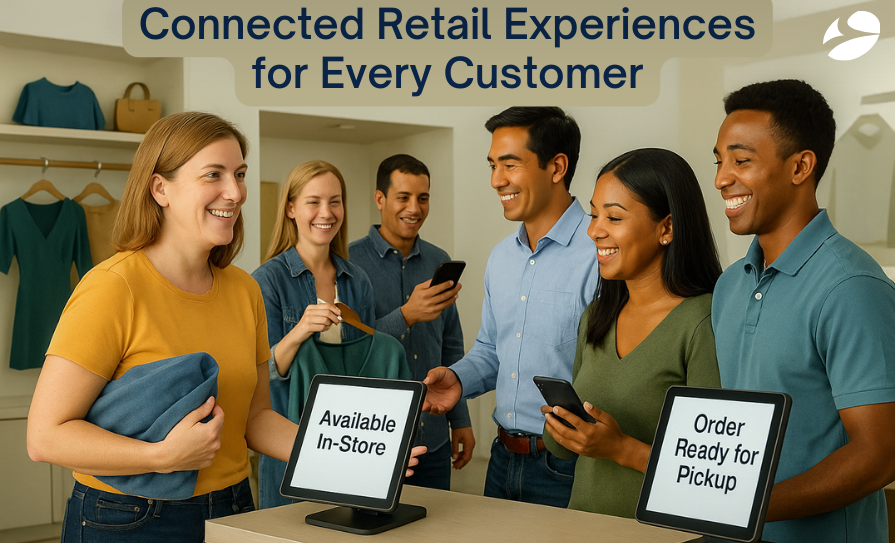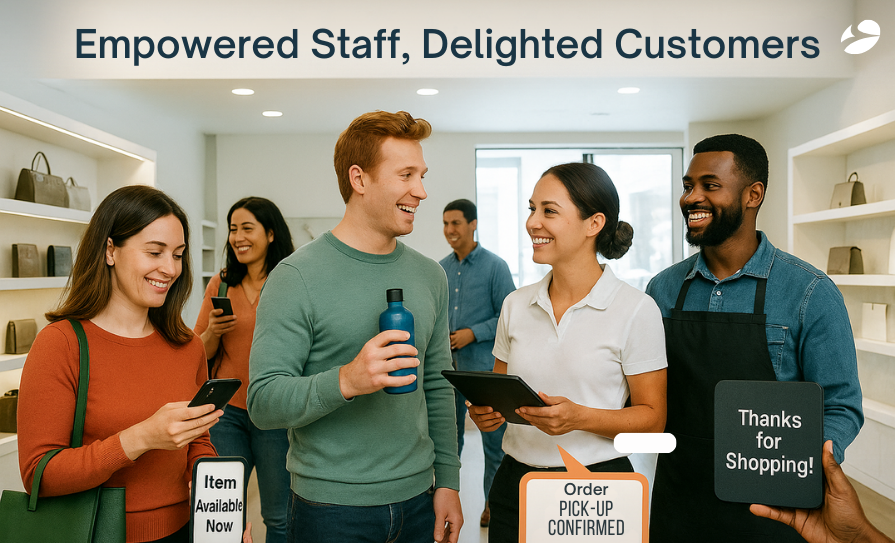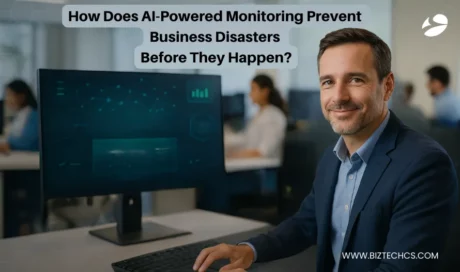How Odoo ERP Solved a UK Retailer's Biggest Omnichannel Challenges?
08 Sep, 2025
5 min read
08 Sep, 2025
5 min read

On a busy Saturday in a British store, a customer inquires about an item they recently viewed online. The store associate checks the inventory system and informs the customer that the item isn’t available. Frustrated, the customer pulls out their phone and shows the webpage, which states that the product is in stock and ready for pickup at that exact location.
Scenarios like this occur frequently for retailers that are growing quickly but still rely on disconnected systems. The result? Customer dissatisfaction, employee confusion, and lost opportunities. What may seem like a small inventory issue is often just the tip of a much larger problem—technology silos that prevent retailers from delivering a seamless omnichannel experience.
Retail is undergoing a rapid transformation. A Harvard Business Review study of 46,000 shoppers found that 73% use multiple channels during their shopping journey. This shows just how seamlessly consumers now move between online and offline experiences. Yet, many retailers still rely on outdated, disconnected systems that can’t keep up with these evolving expectations. Read the study here
This is exactly where we, at BiztechCS, can step in. By leveraging Odoo ERP, we can help retailers unify their operations, synchronize data in real-time, and ensure that both customers and staff always have accurate information—across every channel.
Retail leaders often tell us the same story: “We’re losing customers, not because we don’t have the products, but because we can’t tell them where those products are.” Without integrated systems, teams spend hours each day manually reconciling inventory between stores and online platforms—a process that is both labor-intensive and prone to errors.
This kind of operational constraint can quickly escalate into a strategic crisis. According to McKinsey’s 2023 consumer research, the majority of shoppers now use at least three channels for each purchase journey, and 75% expect a seamless omnichannel experience. When systems can’t keep up with these expectations, every stock discrepancy or delayed update risks driving customers away and eroding trust. Source.
The challenges usually look like this:
BiztechCS Expert Tip: When retail systems operate in isolation, every customer interaction becomes a potential point of failure. This is where we can help. With Odoo ERP, we can integrate your sales channels, unify your inventory data, and deliver real-time stock visibility to your staff and customers. We can also streamline manual processes, so your teams spend less time reconciling and more time selling.
The real question isn’t whether you need integrated systems—it’s how quickly you can implement them without disrupting daily operations. If you’re facing similar challenges, we can work with you to identify the gaps and implement solutions that protect both your revenue and customer trust.
Feeling the strain of managing multiple retail systems? You’re not alone. Many successful retailers have transformed their operations through strategic ERP implementation. Let’s explore how a phased approach could work for your business.
The first phase of an omnichannel transformation often begins with implementing Odoo POS as the foundation for all future improvements. This is where we can step in as your strategic partner, using our proven methodology for phased system evolution that minimizes disruption while delivering rapid results.

Retailers often tell us, “We can’t afford to shut down for a system upgrade. Our customers expect us to be open and functioning normally.” That’s exactly why our phased implementation approach can make such a difference.
Here’s how we can roll out Odoo POS for both physical and online stores:
Week 1–2: Pilot Store Implementation
Week 3–4: Gradual Rollout
With this approach, your associates will have real-time visibility for the first time. Instead of uncertainty, they can confidently inform customers whether an item is available in-store, at another location, or for online delivery.
BiztechCS Consultant Tip: We recommend starting your Odoo omnichannel retail solution at one pilot location with your most experienced team. Their insights and feedback become the foundation for the success of the wider rollout. Ask yourself: How much time does your team currently spend manually checking inventory across different systems? Many retailers discover that they’re losing 10–15 hours every week on processes that can be automated through proper system integration.
Once the POS foundation is established, the next phase focuses on integrating Odoo POS with warehouse management. This isn’t just about connecting systems—it’s about creating intelligent inventory flows that can anticipate and respond to customer demand patterns.
In 2023, the fashion industry produced 2.5 to 5 billion excess items, worth $70 to $140 billion in unsold sales. Many brands still battle both stock-outs and overstock—making seamless, integrated inventory systems more critical than ever. This is exactly the kind of costly disconnect we can help you eliminate. Read more here.
BiztechCS Expert Tip: Real omnichannel success stems from channels working together intelligently in the interest of delivering exceptional customer service. That’s the principle we bring to every planning session. Ask yourself: How often do your customers request products you have in stock, but not in the right place? With integrated warehouse management, we can turn those missed opportunities into moments of delight—and help your customers become long-term advocates.
Ready to explore how integrated inventory management could transform your retail operations? Connect with our ERP specialists to discuss your unique challenges and opportunities.
The final phase of transformation involves harmonizing all elements into a single omnichannel retail ecosystem. Here, the objective isn’t just to fix operational issues—it’s to open new opportunities for customer engagement and long-term business growth.

We can help you implement BOPIS to transform the buying experience radically. Customers will be able to browse the full inventory online, reserve items, and collect them at their convenience. Retailers adopting this model typically see a 28% increase in store foot traffic.
We can create centralized customer profiles that capture every interaction—whether online, in-store, or over the phone. This allows you to deliver personalized experiences and run marketing campaigns that resonate with individual preferences.
We can configure order routing logic to optimize based on proximity, inventory availability, shipping costs, and delivery timelines. This type of intelligent fulfillment can reduce shipping costs by over 20% while improving delivery speeds.
With real-time dashboards, we can provide your leadership team with a unified view of performance across all channels, encompassing sales trends, stock levels, customer behaviors, and operational KPIs. This visibility enables faster decisions and reveals growth opportunities you may not have spotted before.
Within 90 days of complete implementation, here’s what you can achieve with us:
These outcomes align closely with industry trends. According to Aberdeen Group’s Omni-Channel Customer Care research, companies with strong omnichannel customer engagement strategies retain an average of 89% of their customers, compared to just 33% for those with weaker strategies. In addition, these companies achieve 9.5% year-over-year revenue growth (source).
Designing and implementing an Odoo omnichannel retail solution can be successful when the right factors are incorporated into the process. Here’s how we can ensure that for you:
We can adopt a gradual rollout rather than a wholesale overhaul from day one. This approach promotes continuous learning and improvement. Each phase can build upon insights from the previous one, reducing risks and ensuring minimal disruption to operations.
We can deliver training that goes beyond just software usage. Our focus is on helping teams understand how integrated systems simplify and enhance their daily activities. When staff sees personal benefits, adoption happens more quickly and with greater enthusiasm.
We can evaluate every decision through the lens of customer experience. This ensures that technical implementations translate directly into tangible benefits for your customers.
We will not stop at go-live. Your system can undergo regular cycles of review and refinement to meet evolving business needs and shifting customer expectations.
Inspired by this transformation story? Every retail business has unique challenges and opportunities. Let’s discuss how a tailored ERP strategy could address your specific needs.

The journey from disconnected retail systems to a unified omnichannel experience doesn’t happen overnight—but it doesn’t need to be overwhelming. What matters most is starting with a clear vision and then taking the right steps toward that goal.
Whether you’re facing inventory discrepancies, customer satisfaction issues, or operational inefficiencies, you’re not alone. Thousands of retailers are on the same journey—and the right technology can help overcome these obstacles.
The retail landscape will continue to evolve, but one thing remains constant: customers will always demand seamless, accurate, and timely experiences across all touchpoints. The question isn’t whether to modernize your retail systems, but how quickly you can do it without disrupting service standards.
Retailers everywhere face common challenges, including inventory discrepancies, evolving customer expectations, and operational inefficiencies. What sets successful businesses apart is their strategic approach and their decision to partner with experts who understand both immediate needs and long-term objectives.
Your retail transformation journey can start today. Whether you’re running a single location, managing a growing chain, exploring omnichannel opportunities, or preparing for a full-scale system overhaul, we can partner with you to design and implement a solution tailored to your goals and timeline.
Let our team of Odoo Experts help you upgrade your operations with the power of Odoo. Get in touch with us and our team will reach out to you to schedule a call.

Artificial Intelligence (AI)
70
By Afzal Qureshi
09 Dec, 2025

Artificial Intelligence (AI)
72
By Afzal Qureshi
09 Dec, 2025

Artificial Intelligence (AI)
43
By Afzal Qureshi
08 Dec, 2025